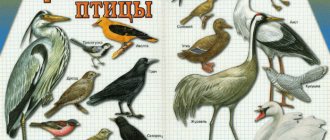Features of the formation of temporary representations in different age groups - older age
Children in the older group consolidate and deepen their understanding of units and some features of time. The name of the parts of the day is associated not only with the specific content of the activities of children and adults who surround them, but also with more objective indicators of time - natural phenomena. Children get acquainted with the seasons, the names of the days of the week, determine what day of the week was yesterday, what it is today, what it will be tomorrow.
In work, it is necessary to widely use such methods as: observations, conversations, reading, retelling fairy tales, poems, looking at paintings, photographs, didactic games and exercises, focusing on the familiar periodicity of day and night.
Older preschoolers need to form conscious concepts about the day. During the learning process, attention is paid to the cyclical change of day and night. Nature itself suggested to people a way to divide time according to the principle: day and night - day. To correctly understand the day, children must realize that the day can be divided into four parts: morning, afternoon, evening, night.
Older preschoolers distinguish and name parts of the day, focusing on sunrise and sunset. In the process of observing natural phenomena, they learn the concepts: at dawn, at dusk, at noon, at midnight. To form these ideas, the teacher uses, first of all, observations, looking at plot paintings, as well as reading fiction and learning poems.
Familiarization with the days of the week already in the senior group should be combined with the formation of knowledge about the week as a measure of working time. Focusing on the fact that people work five days a week and rest two days helps to understand the quantitative composition of the number 7 (days of the week).
Experience shows that not all days of the week are remembered equally easily and quickly. The best days to remember are Sunday, Saturday and Monday.
In addition, in the older group, work is being done to develop children’s ideas about the seasons. In this case, pictures and verbal material are widely used: stories, fairy tales, poems, riddles, proverbs.
In the older group, the teacher develops a “sense of time”, an understanding of its meaning in people’s lives, and the irreversibility of time. In this group there is an opportunity to familiarize children with a three-dimensional model of time, by which they can understand the continuity, irreversibility, and symmetry of time.


